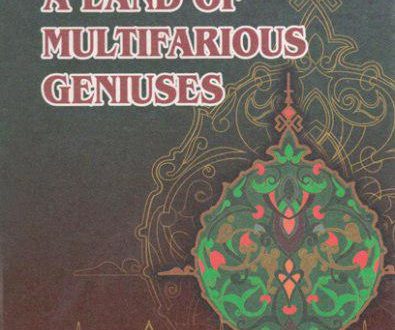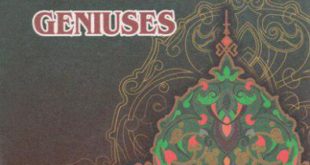In order to clarify the essence of a legal matter, it was necessary lot the author to review the main sources of Shariah at first, and then the scientific and legal works left by such well-known figures of the I Jamie science as Imam Abu Hanifa, Imam Malik, Imam Shafi’i, 11nam Ahmad ibn Hanbali and then ash-Shaybani’s “Zahiru-r-nvaya”, Abu Yusuf’s “Kitabu-l-hiraj”, “Adabu-l-qazi”, “Contradictions I’rlween Abu Hanifa and Ibn Abilayla”, “Refusal to the ideas pressed by Avzai and Anas ibn Malik on some legal matters” as ‘11 as the works by Imam Zufar, Sheikh ul-Islam Ibn Taymiya, Ibnu-l-Javziya and other specialists in legal matters of the later periods. It was a huge task for the author to study and investigate them with great attention, classify them into corresponding branches of law taking into consideration their main features and choose among them the most important and necessary points of view which could be useful for his further intentions. It was necessary for the author to look through all the existing books and documents on the Islamic law written by the leading specialists in this field from the points of view of the Hanafian order, Malikiya order, Shafi’iya order and Hanbaliya order and choose the most corresponding and suitable viewpoint for real situation in life by comparing their content. In the preface of his book “Hidaya” he wrote about this complex and difficult process the following lines: “…then thanks to the kind help and support of the Creator, I tried to correlate the existing legends and mental proof. Then concluding my ideas as laconic as possible, I started to write another commentary titled as “Hidaya””.
Of course, the process of studying and comparing such a huge amount of legal materials, proving the correctness of these materials and finding out their legal principles demanded from the author a great deal of labour, patience and clear mind.
While explaining the essence of controversial problems of the Islamic law, the author provides the names of famous lawyers, people representing sahabas, founders of religious orders, geographical and historical names, etc. In the preface dealing with the content of the first part of “Hidaya” he mentions more than 50 names of representatives of sahabas and tabi’is, 12 groups and tribe names, 55 geographical names and characterizes them shortly. The author also mentions more than 90 names of great lawyers, imams, mujtahids, famous sahabas and experts in the science of Hadiths of that time whose works were cited in “Hidaya”. Looking through the above mentioned facts, it is not difficult to imagine what a difficult task the author of “Hidaya” carried out.
In the process of writing his book “Hidaya”, Burhan ad-din al Marghinani created a special style of writing peculiar to himsell only. Each word and phrase of the text of the book is clear and meaningful, the phrases denoting legal sentences are laconic and strict without ambiguity and given in the form of a rule. His phrases are short but meaningful, the structure of the sentences is perfect and understandable. If the logical situation does not demand, the author tries to avoid synonymous words, expressions and phrases which do not coincide with the logical meaning of the idea. His style of writing is considered to have reached the level of “Sahli mumtani” (i.e. easy, simple but it is impossible to write as is written by the author).
While writing the book “Hidaya”, the author used clear and laconic phrases and legal terms which were mentioned and cited by a number of authors who had written commentaries devoted to “Hidaya”. Relying on these sources, a number of authors such as Hajji Khalifa (Katib Chelebi), Sheikh Abdulhaq Dehlavi and Abdulhay Laknavi tried to comment on and characterize them. Some of them that are worth citation are as follows:
By the phrase “fi diyarina” (in our country), the author meant die cities of Maveraunnahr.
By the phrase “Qala mashaikhuna” (our sheikhs, i.e. our teachers and masters), the author meant the scholars of Samarkand and Bukhara.
The word “fiqh” is mostly used to denote mental proof. For instance, in the phrase “Va-l-fiqhu fiyhi”, i.e. “on this problem the mental proof is as follows…”
As is, mentioned by Abu Su’ud, in order to express his opinion, the author of “Hidaya” uses such an expression “Qala al-abdu-z-zaif ala anhu” (This poor creature — may God forgive him — says the lollowing…). But later, after his death, his students and followers changed this phrase with the phrase saying “Qala razi-Allahu anhu” (May God be satisfied with him). In order to keep himself from megalomania, the author tried to avoid the use of the personal ‘I’.
It was habitual for the author of “Hidaya” to present the proofs the religious orders which seemed to him correct at the end of the book. As was mentioned by Zayniddin Sheikh Muhammad Afandi (he was also known with a nickname Qazizada Rumi) in his book “Nataiju-l-afkar”, in the process of providing proofs for different subjects under discussion the author used to present the strongest proof at the end of the chapter. It meant that this proof is the main one to be kept in mind.
 Imom Buxoriy xalqaro ilmiy-tadqiqot markazi bukhari.uz
Imom Buxoriy xalqaro ilmiy-tadqiqot markazi bukhari.uz











